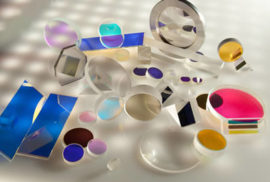
On a recent trail running trip down the wild and scenic portion of the Rogue River, I met a group of retired hikers staying at at the same lodge.
At breakfast, we struck up a conversation about my line of work. Since most of the hikers wore glasses, I pointed to their lenses and told them I have a company that designs coatings for the ophthalmic industry and beyond. In fact, I told them, many in the group probably had one of our coatings applied to the lenses they were wearing. They were surprised, as people often don’t give a second thought to the coating on their lenses. Coatings are frequently invisible – out of sight, out of mind.
It turned into a lively discussion over scrambled eggs and bacon. We talked about types of vision problems, different lens materials, glare and polarization, light waves, and the way light is absorbed and reflected so that we see color. Finally, I explained that a lens is a medical device which focuses light on the retina to improve sight. In doing so, the lens also reflects light away from the eye. We can use coatings to eliminate these reflections and let more light reach the eye, as explained in our LET video:
Most of the information was totally new to this group. Most people do not have a basic understanding of how their lenses work and why we would apply coatings to them.
In my work to educate and inspire, I have spoken to many people in labs all over the country and around the world. I’ve met countless eye care professionals. I have trained hundreds of opticians. While I built these relationships, I gleaned this above all: eye care professionals truly want to provide their patients with the best vision care possible. Patients are hungry for knowledge. Yet the information gap persists.
So I ask these questions:
· Why does the information gap exist?· How much should we expect the consumer to understand?
· Does the consumer have too many choices?
· If we are to educate the consumer, when?
· If we are to educate the consumer, who?
· If we are to educate the consumer, where?
After a short conversation, the folks I met walked away armed with the information and vocabulary required to go back to their doctors and ask for lens solutions catered to their own specific needs. My hope is that they also go back home and tell their friends what they learned. Even if the information that travels through the grapevine isn’t 100% accurate, at least these folks will know enough to ask more questions.
We need to get this information to more people. We can help the consumer make an informed decision.
The best place to inform people is where the industry meets the consumer – at the retail location. There, caring and educated opticians and optometrists personally connect with under-educated consumers. At this interface, we have endless opportunities for low cost, high impact interactions. We can leverage the existing trust to build relationships and educate our consumer.
At the end of the day, consumers have near-infinite choices. We give them many options (and associated pricing) but we do not give them the information necessary to make the best choice for them. Let’s talk about how to change this dynamic. Rather then sell, let’s teach and inform. Consumers do not know how to access the knowledge they need, and we hold the key that will let them unlock it.



